I'm creating a game with processing java. I optimized the game as much as I could making sure the image textures are very small, drawing only certain portions of the map, etc., and the game runs consistently at 60 FPS. However, when I want to draw an image across the entire screen, for an example, as a tinted overlay (as seen from the image below)
the FPS significantly decreases, going from 60 FPS to around 40 FPS. The same happens if I use a fullscreen graphic, like a rect(0, 0, width, height) the FPS will still decrease when the graphic is quite large, spanning the width of the entire screen. Literally something as simple as the code below causes lag.
PImage fullscreenImg;
void setup() {
size(displayWidth, displayHeight);
fullscreenImg = loadImage("img.png");
}
void draw() {
image(fullScreenImg, 0, 0, width, width);
}
Here's a video of the lag happening when a full width image is displayed (the FPS goes from ~30 to ~20): https://www.youtube.com/watch?v=bjKFIgb2fII
I've tried to solve this problem by using the get() function, or reducing the resolution of the image (which just causes the image to be more pixely), and none of it works; the FPS still stays at around 40. Is there any way to make an image that has a very wide width, in my case, covering the entire screen, without decreasing the FPS? Am I doing something wrong?
Thanks for any help!
